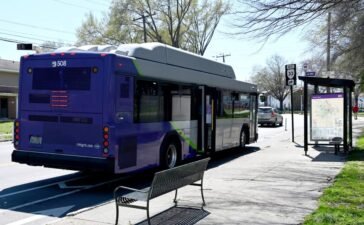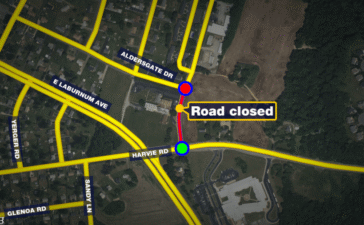RICHMOND, Va. (WRIC) — January’s water crisis is estimated to have cost the city of Richmond at least $6.7 million, according to a memo provided to Richmond City Council in late June.
From Jan. 6 to Jan. 11, a widespread water crisis left residents and businesses throughout Richmond — as well as Henrico, Hanover and Goochland counties — with little to no water. In the wake of this event, both city leaders and regulatory agencies have been looking into how to prevent such a catastrophe from happening again.
In addition to the financial strain the crisis more immediately put on the city, it was determined through multiple investigative reports that the crisis — though sparked by a power outage at the water treatment plant — was actually caused by outdated infrastructure and poor management.
The city has vowed to address these issues — but such extensive improvements cost money, and a June 10 memo obtained by 8News details just how much financial strain the water crisis is estimated to have put on the city.
In late February, Richmond Mayor Danny Avula said “roughly $5 million” had been spent on repairs and improvements at the water treatment plant. As of June 10, the total estimated cost of the water crisis across all city departments is $6,743,903.
Per city officials, these costs have not yet been finalized as of Monday, July 7 — meaning it’s likely the total will change.
The costs were divided across six categories of expenditures as follows:
- Equipment Replacement: $4,644,618
- Contractors: $1,254,058
- Overtime: $448,797
- Rental Equipment: $257,914
- Supplies and Commodities: $114,420
- Emergency Operations Center (EOC) Costs: $24,096
Per city officials, the “Overtime” category refers to overtime paid to employees who staffed the EOC, while the “Contractors” category includes those hired to support the city throughout the water crisis. “Supplies and Commodities” refers to food and bottled water for staff, as well as the rental of portable restrooms.
Within the memo, officials also broke down these costs by the city department that incurred them. The Department of Public Utilities (DPU) spent the most by a large margin, coming in at just under $5.7 million.

The department that spent the next-highest sum was the Department of Emergency Communications, Preparedness and Response, which incurred about $540,000 in costs.
As the DPU is responsible for the water treatment plant, it is the department responsible for funding its necessary fixes and improvements.
“No expenditures were made in which the expenditure exceeded the then-unencumbered portion of a department appropriation,” the memo reads.
During a Richmond City Council meeting on Monday, DPU director Scott Morris said the city has made progress on a substantial number of those fixes.
Also at Monday’s meeting, city councilwoman Kenya Gibson asked about the city’s cost recovery plan related to the water crisis.
Stephen Willoughby, director of emergency communications for the city, said Richmond officials have been seeking possible relief through both federal and state channels.
Gibson asked for a more detailed breakdown of costs that included what exactly these dollars were spent on, particularly within the “Contractors” category. Willoughby said the city could compile and produce such a document for City Council.
Morris previously detailed the 10-year plan the city has laid out to revamp its water system, summarized as follows:
- Phase 1: “Foundation Building,” to be completed in 2025
- Critical infrastructural upgrades
- High-priority VDH compliance items, including those in the Order of Consent
- Comprehensive system assessments
- Robust preventative maintenance program
- Phases 2 and 3: “Core System Modernization,” to be completed in 2026 and 2027
- Replace SCADA as a phased implementation
- Upgrade primary water treatment equipment
- Build redundant power systems
- Replace critical aging water distribution mains
- Phases 4 and 5: “Resilience and Optimization,” to be completed in 2028 and 2029
- Complete automation of backup systems
- Full redundancy for critical components
- Advance water quality monitoring
- Major water distribution system improvements
- Phases 6 through 10: “Long-Term Sustainability,” to be completed between 2030 and 2034
- Any remaining infrastructure needs
- Smart water technology
- Industry-leading reliable metrics
- Fully-modernized systems
For all of 8News’ coverage on the Richmond water crisis, click here.






